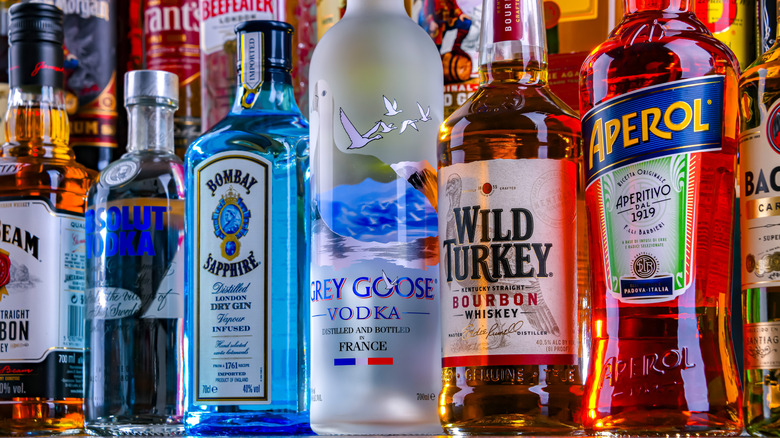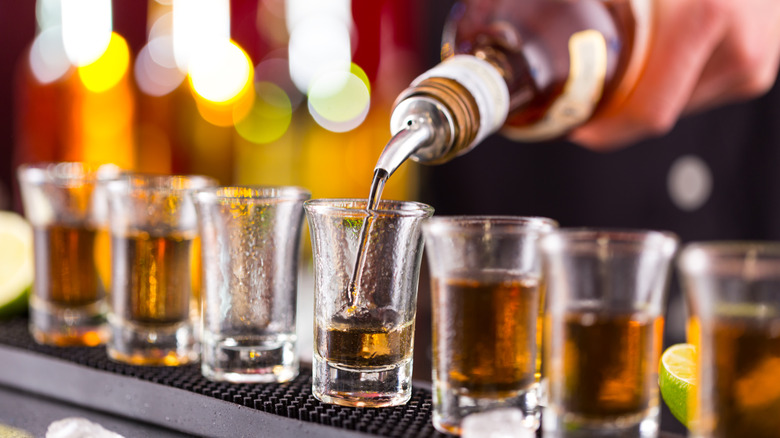Here's What 'Proof' Means In Alcohol
If you've ever wondered what the strongest alcoholic drink you can have is, the answer lies in something called the "proof" of the alcohol. If you've ever looked at the label on a bottle of liquor, you've probably seen both the ABV (alcohol by volume) percentage and a "proof" number, often near each other on one of the lower corners of the label. But what do these numbers mean, and how did proof become a standard way to measure alcohol's strength? It's actually a pretty cool story.
The proof is more than just an extra number on the already busy labels of alcoholic beverage bottles, although it feels that way if you're not sure what it means. Instead, it's a nod to the history of alcohol testing and it gives us a way to understand a drink's strength before we try it and make the pursed-lip face akin to someone who bit into a lemon. Originally, "proof" was a method of testing spirits' alcohol content. In the 18th century, the British Navy would pour gunpowder on alcohol and ignite it; if the mixture burned, it was "proof" of high alcohol content. Today, proof has evolved to a precise, standardized way to measure alcohol strength that doesn't include any gunpowder at all. In the U.S. it's exactly double the ABV, so if your favorite rum reads 40% ABV, it's 80 proof, which makes it simple to read and understand.
How proof affects your drink choice
When choosing an alcoholic drink, the proof is a quick way to gauge its potency. A bottle of whiskey marked 120 proof is 60% ABV, letting you know it's stronger than a 40 proof (20% ABV) liqueur. This helps bartenders and at-home mixologists alike balance flavor and strength, as higher-proof spirits often drive a more intense profile and are usually enjoyed in smaller portions due to strength. Lower-proof options, however, allow for larger servings and mixing into cocktails without overwhelming other ingredients.
The serving size for alcohol is 14 grams, which translates to 1.5 ounces (a standard shot) of an 80-proof spirit. The serving size is important because of the way it impacts your blood alcohol content (BAC), or essentially how intoxicated you are. When drinks are mixed with higher-proof alcohol, a single shot contains more servings of alcohol and your BAC increases more quickly. Drinks like the AMF and Long Island Iced Tea (which are different because of their mixers) contain several different high-proof alcohols, which is why they're notorious for getting you drunk quickly. The Long Island Iced is often looked down upon by bartenders for that very reason. While there is a lot that goes into deciding what drink to have, being aware of proof can help you understand your drink's impact and adjust your serving size accordingly to drink responsibly.

